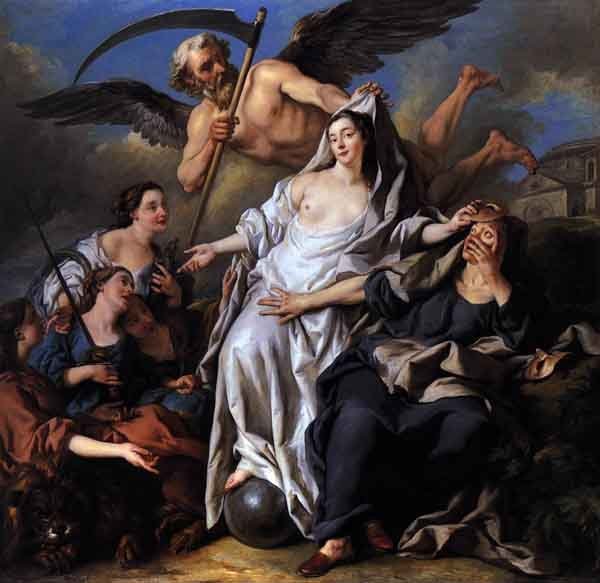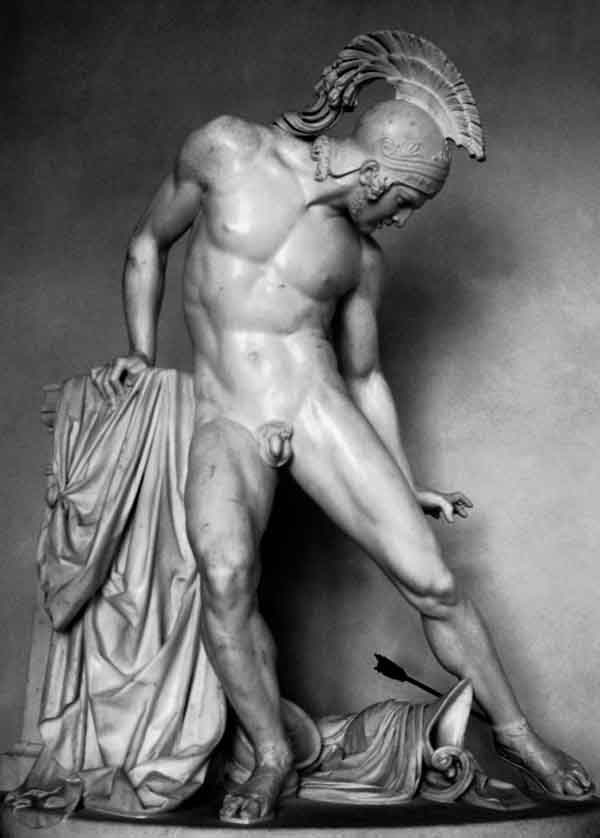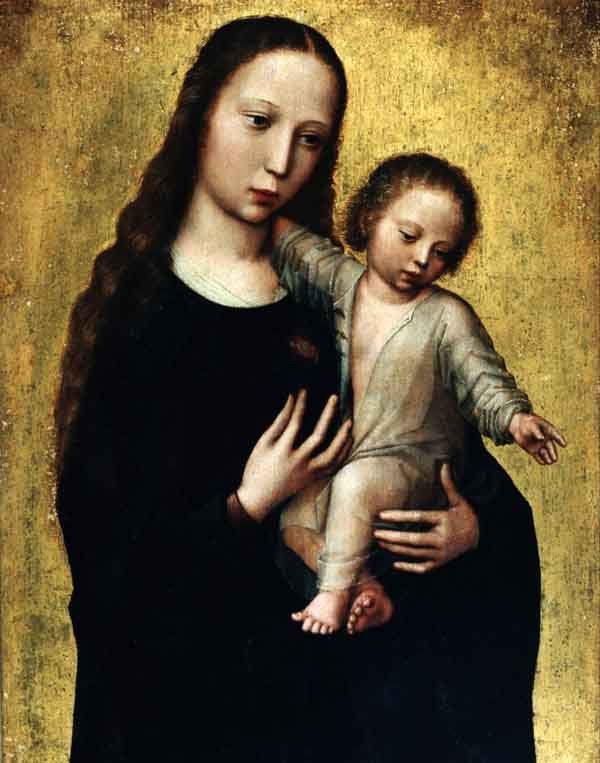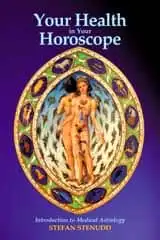|
TAROT
card meanings & free reading
|
Tarot Archetypes 2 Allegory of Time unveiling Truth. Painting by Jean François de Troy, 1733. In the Tarot, time is represented by the card "Temperance".
Archetypes — the Themes of MythsAn allegory (like the painting above) is the artistic way of representing principles and ideas by persons and objects, much like the concept of archetypes. The strong link to myths is evident in both cases.
Archetypes — the Prototypes in MythsMyths have themes. They are stories dealing with specific subjects, the roots of which have been described on the previous webpage.But stories also have characters, and in the case of myths they are often representing much more than a single person doing this or that at a whim or from some basic human need. They are not just types, but archetypes. It’s a term from Ancient Greece, signifying what we would call a prototype, a model on which other things are based. It doesn't necessarily refer to characters in a play. Plato meant that behind the real world, there are ideal forms from which our world finds its shapes.
Jung's ArchetypesThe use of the term archetype for myth and drama was made popular by the psychoanalyst C. G. Jung, who presented his application of it in 1919.He found patterns in folklore, myth, and art, from which he extracted several symbolical types, characters carrying certain meanings, which could be explained as different aspects of the human mentality. He claimed that these archetypes are the same through history and in every culture, almost as if included in the human genome. By studying the archetypes and their meanings, we can learn to understand ourselves.
It’s a bit like the chicken or the egg, though. Jung would have claimed that the archetypes were there before the drama, which had to incorporate them in order to enthrall the audience. Indeed, drama as well as literature carried the insights of psychology long before the science of it was invented. An anthropologist might remind us that human life revolves around certain social roles, ever since we got this gargantuan brain of ours. There are mothers, fathers, and children. There are also leaders, advisors, priests, warriors, heroes and cowards, followers and agitators, artists, dreamers, wanderers, hunters, lovers, and so on and so forth. Each one of us has bits and pieces of it all.
Larger than LifeAnyway, the idea of the archetype is as interesting in psychology as it is in drama. Myth, it seems, is full of them, the larger than life characters proudly carrying their sharply chiseled traits. Those who really excel at their archetypes are usually called gods in the myths.If we extract the archetypes from a myth or a play, we see the plot more clearly and understand their actions better. We also become aware of the patterns by which life tends to repeat itself whenever and wherever. The human condition can be described through archetypes, which are necessities by which our actions and our sentiments are governed. For example, any child can find that the dependency of the mother may become a burden of which one needs to rid oneself, and the admiration of the father easily becomes a rivalry of sorts, maybe even contempt at length. It’s part of growing up.
A leader is sort of the father of fathers, and the leader of leaders we call god, whether imagined or not. A hero is what we want to be, but we can't if the hero we look up to is constantly guarding our safety, doing the heroic deeds for us. An adversary angers us, but would we ever move an inch if not confronted by one? And no adversary is more persistent than the one each of us carries in our own mind. A lover is sweet, but never as sweet as when we are the reciprocal object of that love. And how easily love turns into the opposite! Indeed, there are patterns by which we live. As Shakespeare said:
NEXT
Tarot ArchetypesMyth EmergesArchetypes — the Themes of MythsArchetypes of the TarotList of Tarot card Archetypes
About Cookies
My Other Websites:I Ching OnlineThe 64 hexagrams of the Chinese classic I Ching and what they mean in divination. Free online reading.
Complete HoroscopeHow predictions are done in classical astrology with the full horoscope chart. Many examples.
Creation MythsCreation stories from around the world, and the ancient beliefs about the world and the gods as revealed by the myths.
Other Books of MineClick the image to see the book (and Kindle ebook) at Amazon (paid link).
|
 Tarot Unfolded
Tarot Unfolded




 Stefan Stenudd
Stefan Stenudd